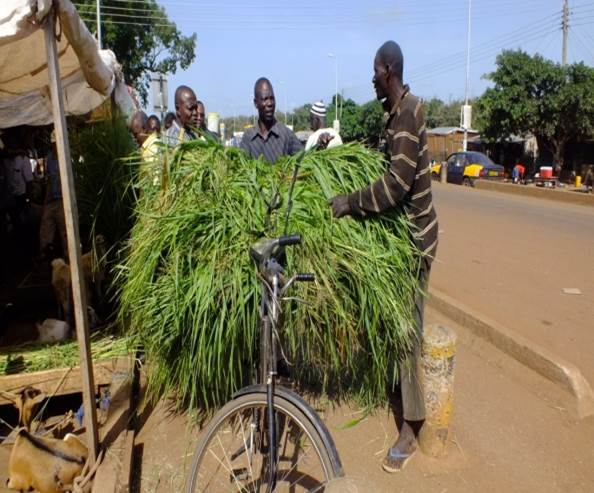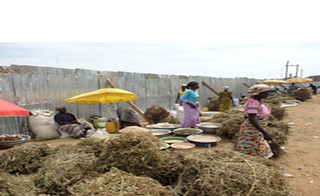Crop residues bring in cash and feeds for farmers in northern Ghana – study

The Africa RISING West Africa Project recently completed a study on emerging feed markets in northern Ghana.
The study by Solomon Konlan, a PhD fellow at the International Livestock Research Institute (ILRI) and the University of Development Studies, Tamale, Ghana, focused on three livestock markets in the northern Ghana towns of Bolgatanga, Wa and Tamale.
Trade in assorted feeds from crop residues such as cowpea hay, groundnut haulms, to agro-industrial by-products (bran of maize, rice and sorghum) and fresh grass is a fast-growing business in the region.

The study found that the animal feeds trade ‘is dominated by men (aged between 30 and 65 years) except for Wa in Upper West Region where the sellers were dominated by women (aged between 30 and 65 years). But worryingly, about one-third of the feed sellers in Wa are children (less than 15 years).
The peak sale period for feeds in these markets is in the late dry season (February to April) when feed is most scarce. Sellers interviewed in the study said their main motivation for engaging in feed sale is to make additional income for the family.
Findings also show that the major constraints in the livestock feed markets include:
- Inadequate storage facilities to conserve the feed after harvest, particularly crop residues.
- Lack of permanent market stalls or designated location for fodder sellers in the market.
- Transportation of fodder from production points to the market which is further aggravated by poor road conditions in most of the rural areas.
A growing livestock population in many peri-urban towns complemented by declining grazing areas implies a great potential for growth of the emerging feed markets in northern Ghana. Fodder production for market in peri-urban areas can be a viable business activity for farmers in Northern Ghana.
Download the study report.




